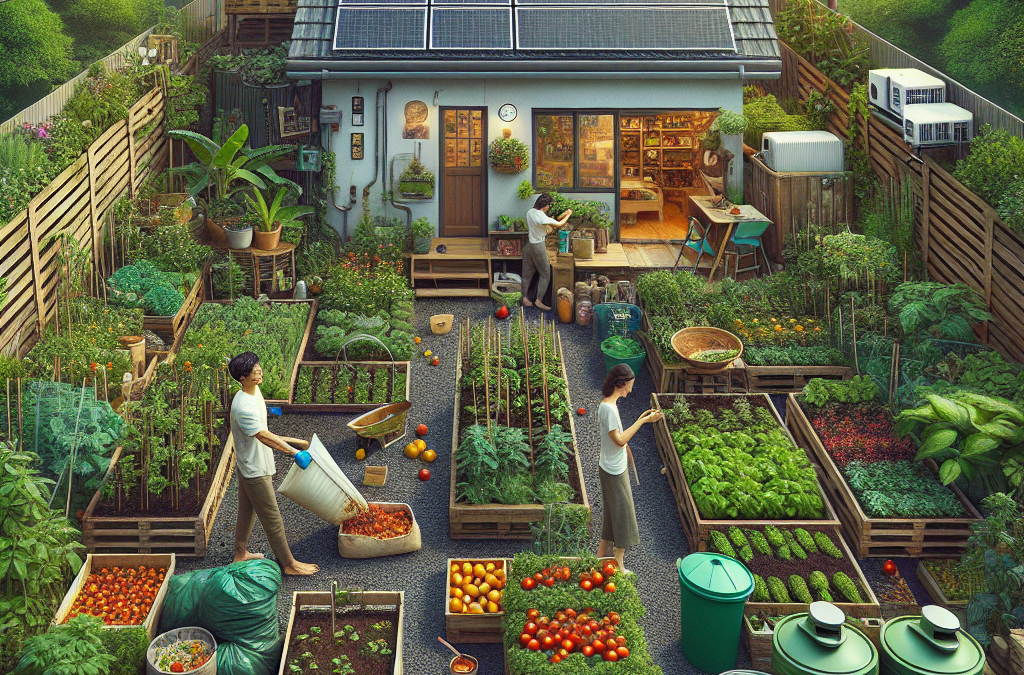Welcome to the world of eco-friendly and sustainable home farming! With increasing concerns about climate change, it’s no surprise that more people are turning towards sustainable living practices. Home farming is one such practice that not only helps you live a self-sufficient life but also reduces your carbon footprint on the planet. In this blog post, we will discuss everything you need to know to create an eco-friendly and sustainable home farm.
Introduction to Eco-Friendly and Sustainable Home Farming
Home farming involves growing crops and raising animals in a small space for personal consumption or commercial purposes. The key difference between conventional farming and home farming lies in its approach towards the environment. While conventional farming relies heavily on chemical fertilizers and pesticides, home farming uses natural methods to maintain soil health and prevent pests. By adopting these practices, you can reduce your environmental impact while enjoying fresh produce grown right at home.
Choosing the Right Plants and Animals for Your Home Farm
The first step towards creating an eco-friendly and sustainable home farm is choosing the right plants and animals. Start by researching which crops grow well in your region and choose those that require less water and maintenance. You may even consider planting heirloom varieties that have been passed down through generations as they are often better adapted to local conditions. Similarly, when selecting animals, opt for breeds that are well-suited to small spaces and require minimal care. For example, chickens are great for producing eggs and meat, while rabbits make excellent companions and provide fur and meat.
Building an Environmentally Friendly Habitat for Your Animals
Once you have selected the right plants and animals, it’s time to build an environmentally friendly habitat for them. This includes designing a layout that maximizes sunlight and ventilation while minimizing waste production. Consider using recycled materials like old pallets or shipping containers to construct animal pens or greenhouses. You should also install rainwater harvesting systems to collect water during rainy seasons and use it for irrigation instead of relying on municipal water supplies.
Using Natural Fertilizers and Pesticides in Your Home Garden
One of the most significant advantages of home farming is the ability to control what goes into your food. Instead of relying on synthetic fertilizers and pesticides, turn to natural alternatives like compost tea, worm castings, and neem oil. Compost tea is made by steeping compost in water and then spraying it onto plants to boost their immune system and improve nutrient uptake. Worm castings are another excellent source of organic matter that can be used as a top dressing for plants. Neem oil, derived from the seeds of the neem tree, acts as a natural insect repellant and fungicide.
Harvesting and Preserving Your Homegrown Produce
Finally, once your crops and animals start bearing fruit (literally), it’s time to harvest and preserve your homegrown produce. Learn how to properly store and process your harvested goods so that they last longer. For instance, you can pickle vegetables, ferment sauerkraut, freeze berries, or dehydrate herbs to extend their shelf life. By doing so, you can enjoy the fruits of your labor all year round while reducing food waste.
In conclusion, creating an eco-friendly and sustainable home farm requires careful planning, research, and implementation. However, with the right mindset and tools, anyone can become a successful home farmer. So, go ahead and get started today!





